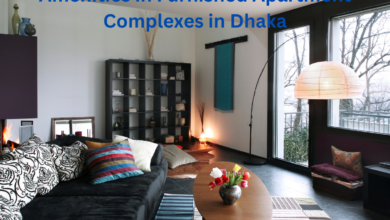Ensuring Safety in Commercial Painting Projects

When it comes to commercial painting projects, safety should always be a top priority. Whether you are a painting contractor, building owner, or occupant, it is crucial to follow safety measures and regulations to protect everyone involved. In this blog post, we will discuss the key safety considerations that need to be taken into account during commercial painting projects.
Personal Protective Equipment (PPE)
One of the most important safety measures in commercial painting projects is the use of proper personal protective equipment (PPE). This includes essential items such as respirators to filter out harmful paint fumes and chemicals, gloves to protect the skin from irritants, goggles to shield the eyes from splashes
One of the most importanand dust, and coveralls to prevent clothing from absorbing hazardous materials. Each piece of PPE plays a crucial role in safeguarding workers against exposure to toxic substances that can lead to serious health issues.
Furthermore, all workers on the job site need to wear the necessary PPE at all times, regardless of the task at hand, to prevent injuries and illnesses. Regular training sessions should be conducted to ensure that all employees understand the importance of PPE and how to use it correctly. Creating a culture of safety not only protects individual workers but also contributes to the overall success and efficiency of the project.
Ventilation
Proper ventilation is a critical factor in ensuring safety during commercial painting projects. Adequate ventilation not only helps to reduce the concentration of paint fumes in the air but also plays a vital role in overall air quality, which can be harmful if inhaled in large quantities. Long-term exposure to these fumes can lead to respiratory issues and other health complications for workers.
It is vital to create well-ventilated work areas by opening windows and doors whenever possible to allow fresh air to circulate. Additionally, the use of fans or exhaust systems can effectively remove fumes and keep the air clean.
Implementing these measures not only protects the health of workers but also ensures a safer environment for occupants in the space being painted. Regular monitoring of air quality can further enhance safety protocols, making it imperative for project managers to prioritize ventilation in their planning and execution processes.
Fall Protection
Working at heights is a frequent necessity in commercial painting projects, whether it involves skillfully painting ceilings in interior spaces or meticulously applying coats to the exterior walls of tall buildings that define city skylines.
Due to the inherent risks associated with working at elevated levels, it is absolutely crucial to implement comprehensive fall protection measures. These measures should include sturdy guardrails, well-constructed scaffolding, reliable harnesses, and ladders equipped with proper safety features to ensure stability and prevent accidents.
Moreover, it’s a must to prioritize thorough training for workers on how to use fall protection equipment effectively. This training should cover not only the proper usage of the equipment but also the importance of regularly inspecting gear for wear and tear.
By fostering a culture of safety and awareness, employers can significantly minimize the risk of accidents on the job site, ensuring that workers can perform their tasks with confidence and focus.
Hazard Communication
Another important aspect of safety in commercial painting projects is hazard communication. Contractors need to provide comprehensive information about potential hazards associated with paints, coatings, solvents, and other materials used throughout the project. This includes not only identifying toxic or flammable substances but also explaining the specific risks they pose to workers and the environment.
Furthermore, clear emergency procedures must be established in case of spills or accidents, ensuring that all personnel are equipped to respond effectively and minimize harm. By prioritizing hazard communication and safety training, contractors like American Painting can create a safer work environment for everyone involved.
Visit here also: write for us
Compliance with Regulations
Lastly, all parties involved in commercial painting projects must comply with relevant safety regulations and standards set forth by the Occupational Safety and Health Administration and other governing bodies. This compliance ensures not only the workers’ safety but also the project’s success. It includes conducting regular inspections of work sites to identify potential hazards and ensure that all safety protocols are being followed.
Addressing any violations promptly is vital to mitigate risks and ensure a safe working environment for everyone involved. This fosters a culture of safety that benefits both employees and employers.
Safety should always be a top priority in commercial painting projects to protect workers from injuries and illnesses while maintaining a safe environment for building occupants.
By following proper safety measures such as wearing PPE, ensuring proper ventilation, implementing fall protection measures, communicating hazards effectively, and complying with regulations, contractors can create a safer work environment for everyone involved. Remember that investing in safety today can prevent costly accidents tomorrow.




